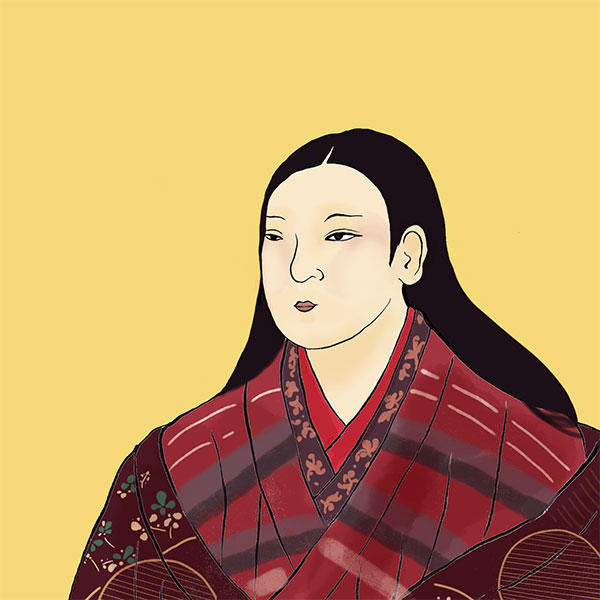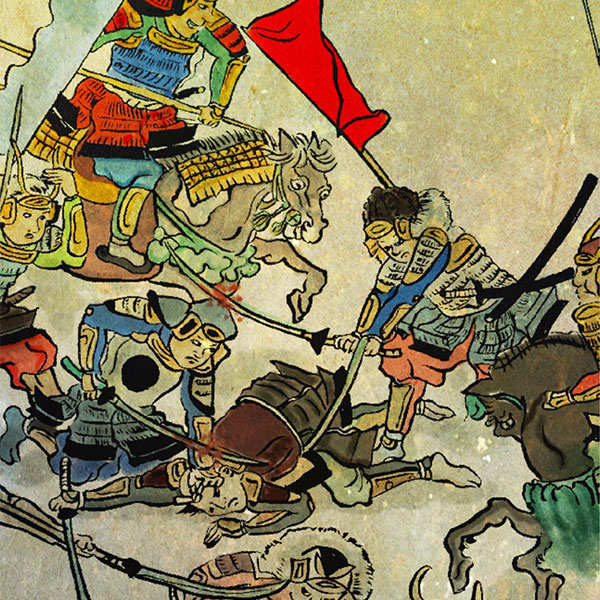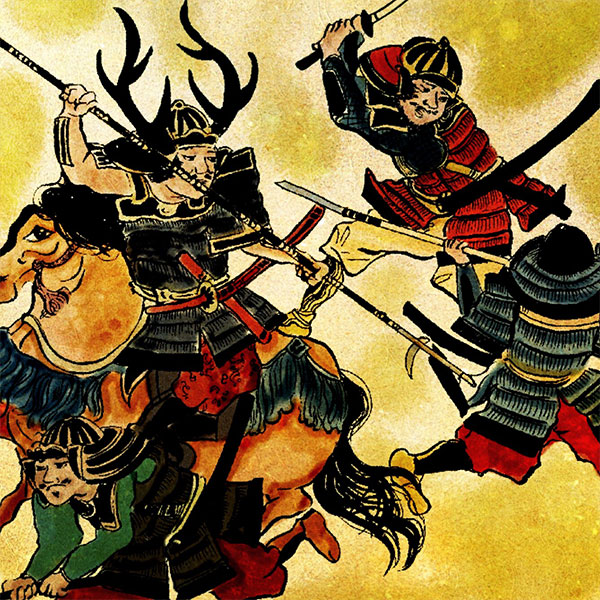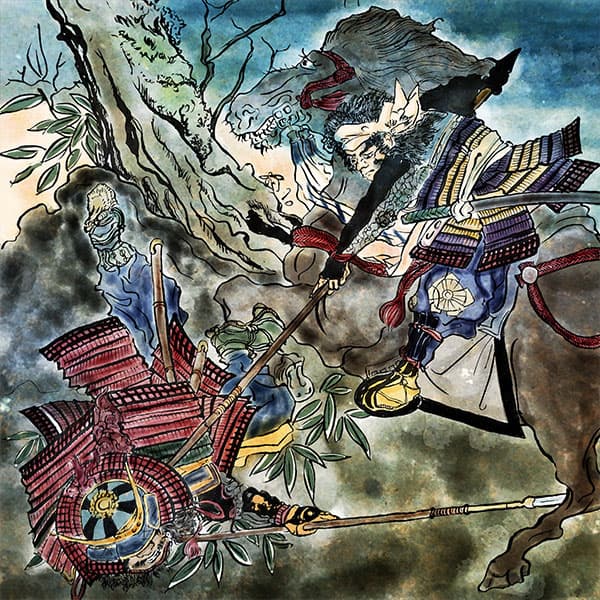Yodo-dono (Yodo-kun/Chacha) (1/2)The end brought on by a woman who was called an evil woman

Yodo-dono (Yodo-kun/Chacha)
- Article category
- biography
- name
- Yodo-dono (Yodo-kun/Chacha) (1569-1615)
- place of birth
- Shiga Prefecture
- Related castles, temples and shrines

Yodo Castle

Osaka Castle
The late Muromachi period was an era called the Sengoku period. There were three princesses in the Asai family of Kitaomi. The eldest of the three sisters was Chacha Asai, later known as Yodo. Yodo lost her biological father Nagamasa Asai and adoptive father Katsuie Shibata one after another, and became Toyotomi Hideyoshi's concubine. And she gave birth to Toyotomi Hideyori. However, Tokugawa Ieyasu, who had become ruler of Japan, did not allow the Toyotomi clan to continue, and launched an invasion of Osaka. This time, we will take a look at Yodo-kun, the tragically unlucky princess of the Sengoku period.
Yodo's name
Toyotomi Hideyori is the son of Toyotomi Hideyoshi, who became a ruler of Japan. Yodo was his mother.
The name "Yodo-kun" was given to him after his death, and his real name is said to be Asai Chacha or Asai Kikuko.
In addition, while she was alive, her name changed depending on where she lived, such as ``Yodo-no-kata'' and ``Yodo-no-fu'' when she lived in Yodo Castle when she gave birth to her first child, Tsurumatsu, and when she lived in Osaka Castle. It was called "Ninomaru-dono" or "Nishinomaru-dono." After giving birth to Tsurumatsu and Hideyori, she was also called ``Mibukuro-sama,'' ``Gojo-sama,'' and ``Odai-sama.'' Furthermore, it is said that after Hideyoshi's death, the temple was decorated and called itself ``Daiko-in'' or ``Taiko-in.''
The names currently used, "Yodo-dono" and "Yodo-kun," began to be used in the Edo period and are not found in primary sources. In this story, I would like to use the name "Yodo-kun" that has been used up until now.
Yodo’s birth and the Asai family
Yodo was born in 1569 in Otari, Omi Province (present-day Nagahama City, Shiga Prefecture). His father was Nagamasa Asai, head of the Kita-Omi Asai family, and his mother was Oichi, the sister of Nobunaga Oda, who ruled Owari and Mino Province (present-day western Aichi Prefecture, Gifu Prefecture). His older brother was Manpukumaru, and his younger sisters were Hajime and Go.
Yodo-kun was called Cha-ka and was raised by his nannies, Okurakyo-tsune (Harunaga Ohno's mother) and Otaniwa-tsune (his great-aunt, the second daughter of Kaizu-dono).
Oichi's older brother, Nobunaga Oda, went to Kyoto in 1568 to worship Yoshiaki Ashikaga. At this time, Oda Nobunaga called on his relatives by marriage, the Tokugawa family in Mikawa Province (present-day eastern Aichi Prefecture), and the Azai family in Omi Province, to join him, and Nagamasa Azai also participated in the march to Kyoto.
However, in the spring of 1570, Nagamasa Asai betrayed the Oda family. On June 28th, the Asai, Asakura, and Oda families will fight in Anegawa. (Battle of Anegawa) From this point on, the Asai family continued to fight against the Oda family. However, the battle turned out to be a disadvantage for the Asai family, and in 1573, his father Nagamasa Asai and others committed suicide. His older brother Manpukumaru also passed away.
Yodo was taken in by his mother Oichi, his younger sisters, and the Oda family.
Shibata family and Hashiba family
Now, Yodo lived with his mother Oichi and his younger sisters at the Oda family's Gifu Castle.
In 1582, Oda Nobunaga was attacked by Akechi Mitsuhide during the Honnoji Incident and was forced to commit suicide. In the same year, Oichi's mother remarried Katsuie Shibata. Yodo moved to Shōjo in northern Echizen Province (present-day Fukui City, Fukui Prefecture) with Oichi and his younger sisters.
However, the following year, in 1583, Katsuie Shibata came into conflict with Hideyoshi Hashiba. The two fought on Shizugatake, but Katsuie Shibata lost. Oichi committed suicide with Katsuie Shibata in Kitanosho, but Yodo and his three younger sisters were protected by Hideyoshi Hashiba. The three of them are looked after by their cousin Nobuo Oda and uncle Nagamasu Oda (Yurakusai Oda), and are cared for by their aunt (Oda Nobunaga's younger sister) Inu.
Toyotomi Hideyoshi's concubine
The three Asai sisters lost their father Nagamasa Asai and mother Oichi.
Yodo's younger sisters first married Kyogoku Takatsugu, the head of the Kyogoku family, the main branch of the Asai family, and their cousin, in 1587 at the arrangement of Toyotomi (Hashiba) Hideyoshi.
In addition, Kogami initially married Kazunari Saji, a vassal of the Oda family, but was divorced by Hideyoshi and remarried Hideyoshi's nephew, Toyotomi Hidekatsu (Toyotomi Hidekatsu died of illness in the Korean War, and later She remarried Hidetada Tokugawa and gave birth to Kazuko Tokugawa, who became the daughter-in-law of Emperor Gomizunoo, and the third shogun Iemitsu Tokugawa).
And Yodo, the eldest daughter. Yodo-kun became Hideyoshi's concubine around 1588.
In 1589, he was given Tsurumatsu and Yamashiro Yodo Castle was given to him by Hideyoshi as a production site. From then on, he was called ``Yodo-no-kata'', ``Yodo-dono'', and ``Yodo-kun''. Tsurumatsu died young in 1591, but gave birth to Jyu (later Toyotomi Hideyori) in 1593.
Furthermore, when the first Tsurumatsu was born, portraits of his parents were sent to Jimyo-in Temple on Mt. Koya. Furthermore, when Hideyori was born, Nagamasa Azai prayed to Hideyoshi for his 21st family memorial service and mourned his blood relations at Yogen-in Temple (Yogen-in is Nagamasa Azai's posthumous name, and the opening name is Mt. Hiei, Nagamasa Azai's younger brother. The monk Seihaku Hoin) was erected. After the Battle of Osaka, this Yogen-in temple was built in 1616 by the second Shogun Tokugawa Hidetada's lawful wife, Yodo's younger sister, Kogami, to serve as a temple for the remembrance of Yodo and Toyotomi Hideyori.
In August 1598, Toyotomi Hideyoshi passed away. As the guardian of Toyotomi Hideyori, Yodo-kun held the real power of the Toyotomi family, making important use of his nannies, such as the Minister of Finance and Tsune.
Battle of Sekigahara
After the death of Toyotomi Hideyoshi, Tokugawa Ieyasu was the Minister of the Interior at the imperial court and one of the five chief elders of the Toyotomi family. This Tokugawa Ieyasu will lead politics. Ishida Mitsunari saw this as a problem. Mitsunari Ishida teamed up with Kagekatsu Uesugi of Aizu (present-day Fukushima Prefecture) to plot the ouster of Tokugawa Ieyasu. Uesugi Kagekatsu prepares for military action in Aizu, and Tokugawa Ieyasu sees this as a problem.
In May 1600, Tokugawa Ieyasu decided to conquer Uesugi and headed for Aizu.
However, in July. News has arrived that Mitsunari Ishida and Yoshitsugu Otani are preparing to raise an army in Osaka. This is a request from Yodo-kun and the three magistrates (Maeda Geni, Masuda Nagamori, and Nagatsuka Masaie), saying, ``Mitsunari is planning to raise an army, so in order to calm down the situation, we want Tokugawa Ieyasu to return to Kyoto.'' This story is written in a letter from Yasumasa Sakakibara (a vassal of Ieyasu Tokugawa) to Miki Akita (a daimyo in present-day Akita Prefecture). From this we can see that Yodo-kun wanted to maintain Tokugawa Ieyasu and the five-bugyo (or three-bugyo) system as stated in Toyotomi Hideyoshi's will.
After that, Terumoto Mori, who was attached to Mitsunari Ishida, became the general commander and the three magistrates also joined him. Ishida Mitsunari did not allow Toyotomi Hideyori to go to war, and he watched the situation quietly.
On September 15th, Ishida and Tokugawa fought at Sekigahara (Battle of Sekigahara) and Tokugawa Ieyasu was victorious. Ieyasu, who won, stated that he believed that Yodo-kun was not colluding with Mitsunari Ishida's side, and Yodo-kun responded with gratitude.
On September 27th, Tokugawa Ieyasu entered Osaka Castle. Yodo-kun met with Toyotomi Hideyori. He then moved to Osaka Castle's Nishinomaru, where he received awards for the battle of Sekigahara and handled political affairs.
Thus, political leadership completely passed to Tokugawa Ieyasu.
Conflict with the Tokugawa family
Now, Tokugawa Ieyasu entered the Nishinomaru of Osaka Castle. Ieyasu reduced and destroyed the territory of the daimyo attached to Ishida Mitsunari, and increased the territory of the daimyo attached to Tokugawa Ieyasu. At the same time, the Toyotomi family's Kurairichi (territory under the direct control of the Toyotomi family) was abolished and was incorporated into each daimyo. On the eve of the outbreak of the Sekigahara War, the Toyotomi family's direct control territory was 2.22 million koku, but it was reduced to 650,000 koku in Settsu, Kawachi, and Izumi Province. Daimyo who had sworn allegiance to the Toyotomi family began to swear allegiance to Tokugawa Ieyasu as their territory increased.
In addition, large cities such as Kyoto, Sakai, and Nagasaki, as well as mines such as Sado Gold Mine, Iwami Silver Mine, and Ikuno Silver Mine, were transferred to the Tokugawa family's management. The cities and mines that supported the Toyotomi family's financial base were also transferred to the Tokugawa family.
In this way, Tokugawa Ieyasu seized power by reducing the power of the Toyotomi family and increasing the power of the Tokugawa family.
Yodo-kun was at Osaka Castle when power from the Toyotomi family was transferring to the Tokugawa family. How did Yodo feel from inside the castle? Did he feel that the power of the Toyotomi family was being diminished? I don't know why now, but it is said that my depression became severe. In 1601, Yodo-kun became extremely depressed and was suffering from chest pain, eating disorders, and headaches, and was prescribed medicine by Gensaku Maganaose (Dosan Maginaose's granddaughter-in-law).
In 1605, Tokugawa Ieyasu was appointed Seii Taishogun.
On May 8, 1605, Tokugawa Ieyasu, through Kodaiin (Toyotomi Hideyoshi's legal wife, Kita Mandokoro), requested Toyotomi Hideyori to take the bows of his vassals. However, since strictly speaking the Toyotomi family did not become a vassal of the Tokugawa family, Yodo expressed regret and refused. Tokugawa Ieyasu dispatched his sixth son, Matsudaira Tadateru, to Osaka in an effort to create peace.
However, conflict between the Toyotomi family and the Tokugawa family became inevitable.
Osaka no Jin
The Toyotomi family and Yodo-kun, whose leadership was taken over by Tokugawa Ieyasu. The Toyotomi family acts as an independent daimyo, distinct from the Tokugawa family. Around this time, his cousin Nobuo Oda lost his territory and had to live in Osaka Castle. Furthermore, his great-uncle, Yuraku Oda, also lives in Osaka. Yodo relied on these two relatives. However, Oda Yuraku tipped off the Tokugawa family, and the story about Osaka Castle was left out.
There is a continuation of the article about Yodo-dono (Yodo-kun/Chacha)

- WriterTomoyo Hazuki(Writer)I have loved history and geography since my student days, and have enjoyed visiting historical sites, temples and shrines, and researching ancient documents. He is especially strong in medieval Japanese history and European history in world history, and has read a wide range of things, including primary sources and historical entertainment novels. There are so many favorite military commanders and castles that I can't name them, but I especially like Hisashi Matsunaga and Mitsuhide Akechi, and when it comes to castles, I like Hikone Castle and Fushimi Castle. Once you start talking about the lives of warlords and the history of castles, there's a side of you that can't stop talking about them.








